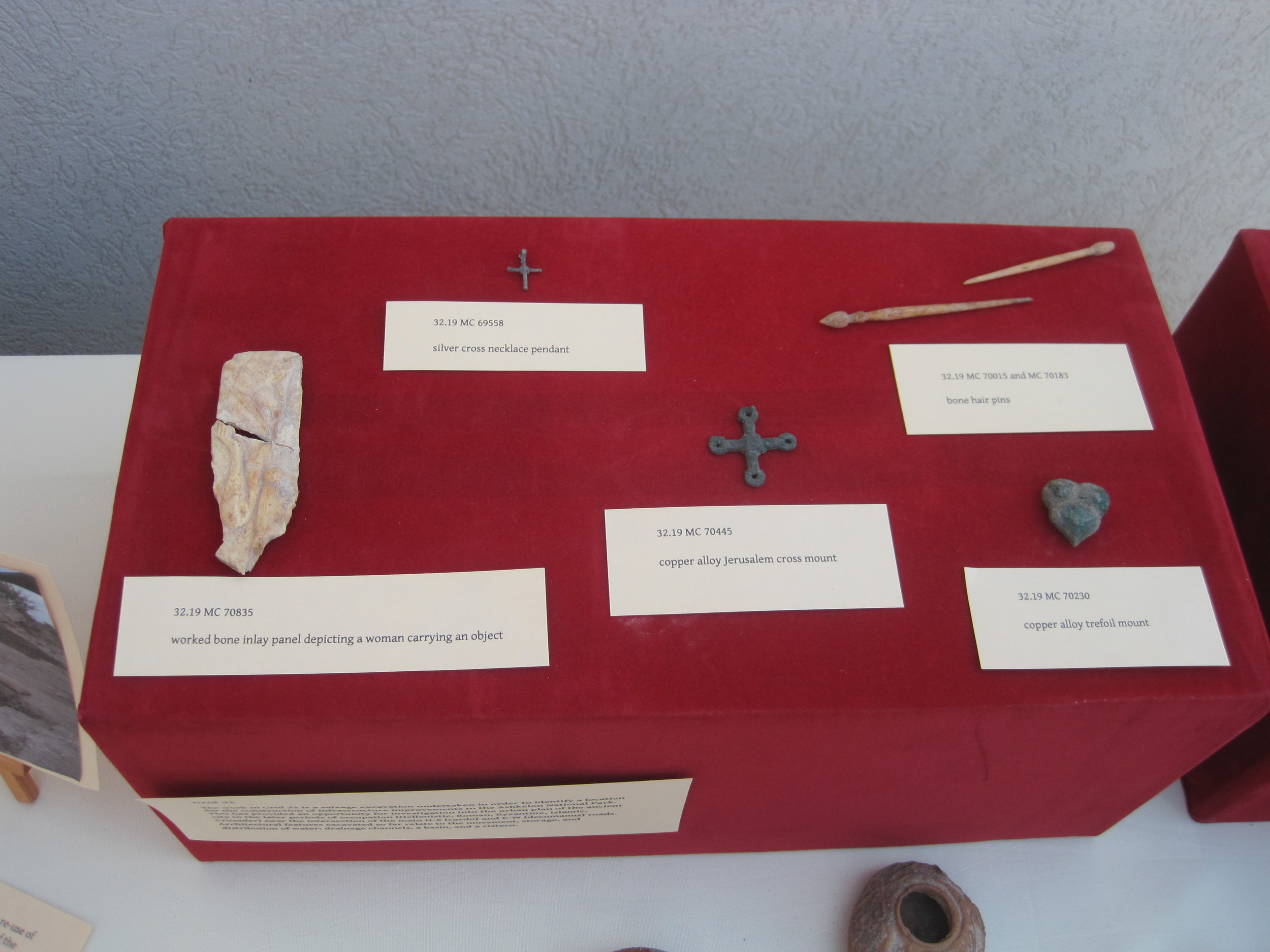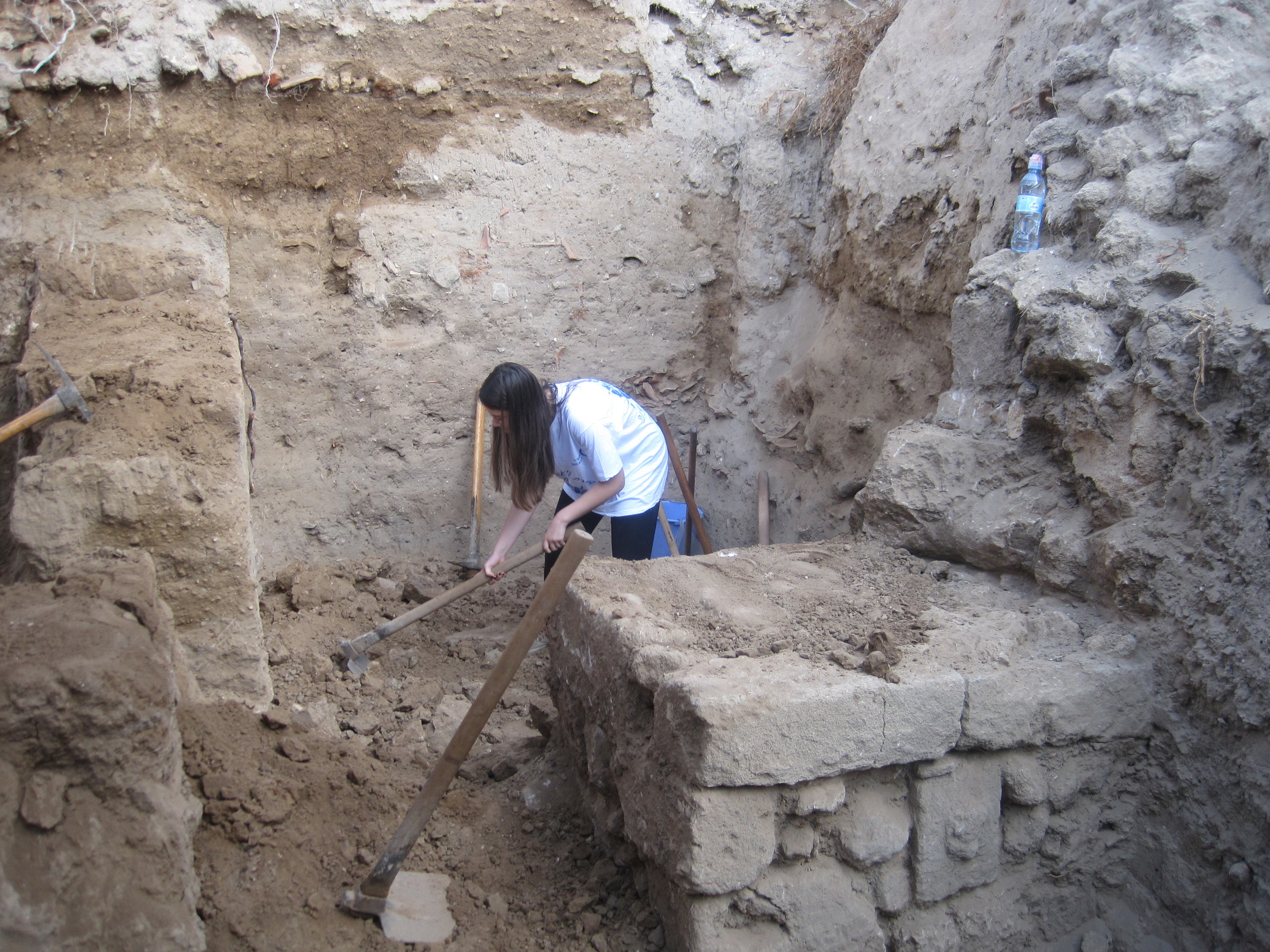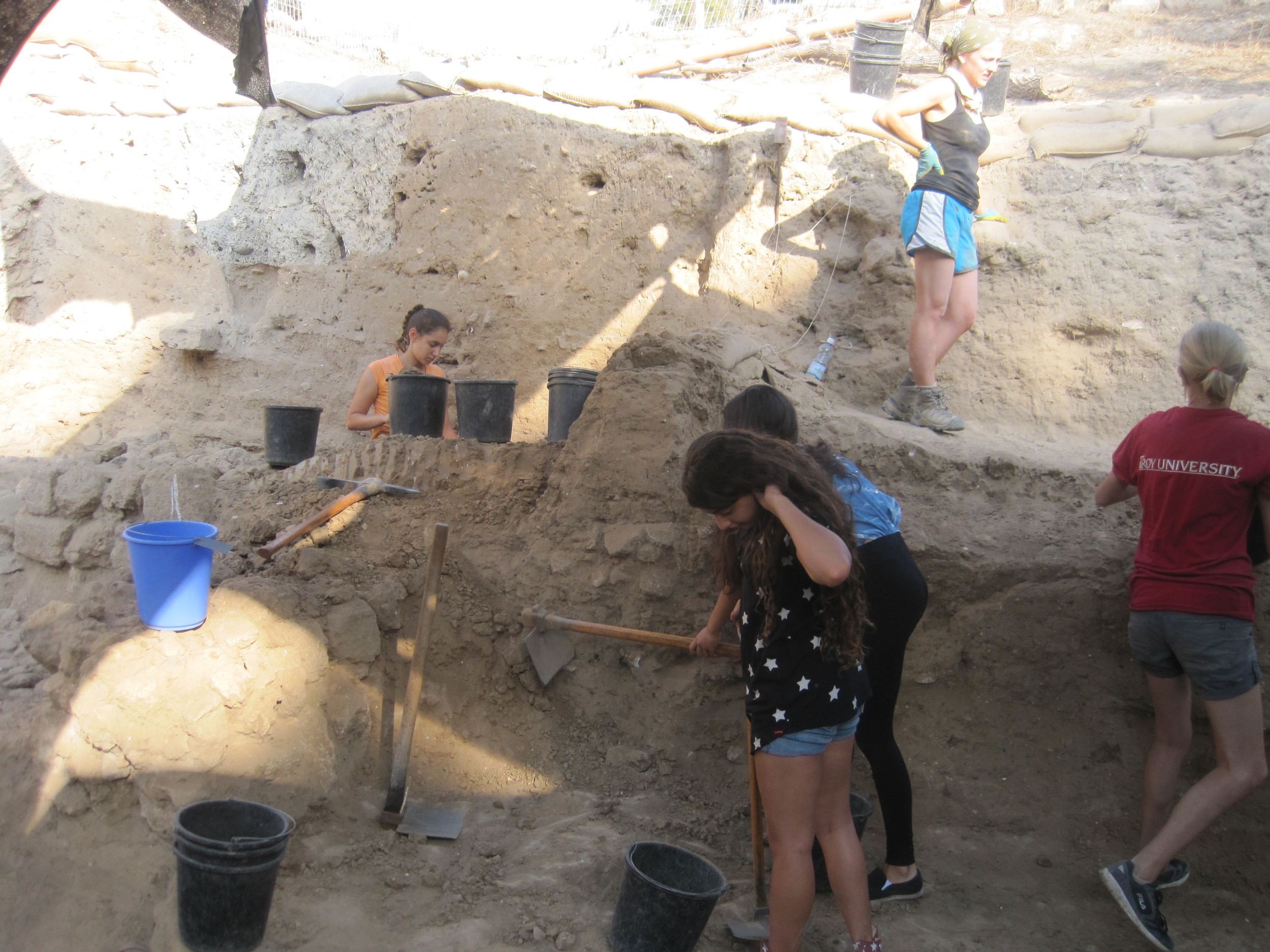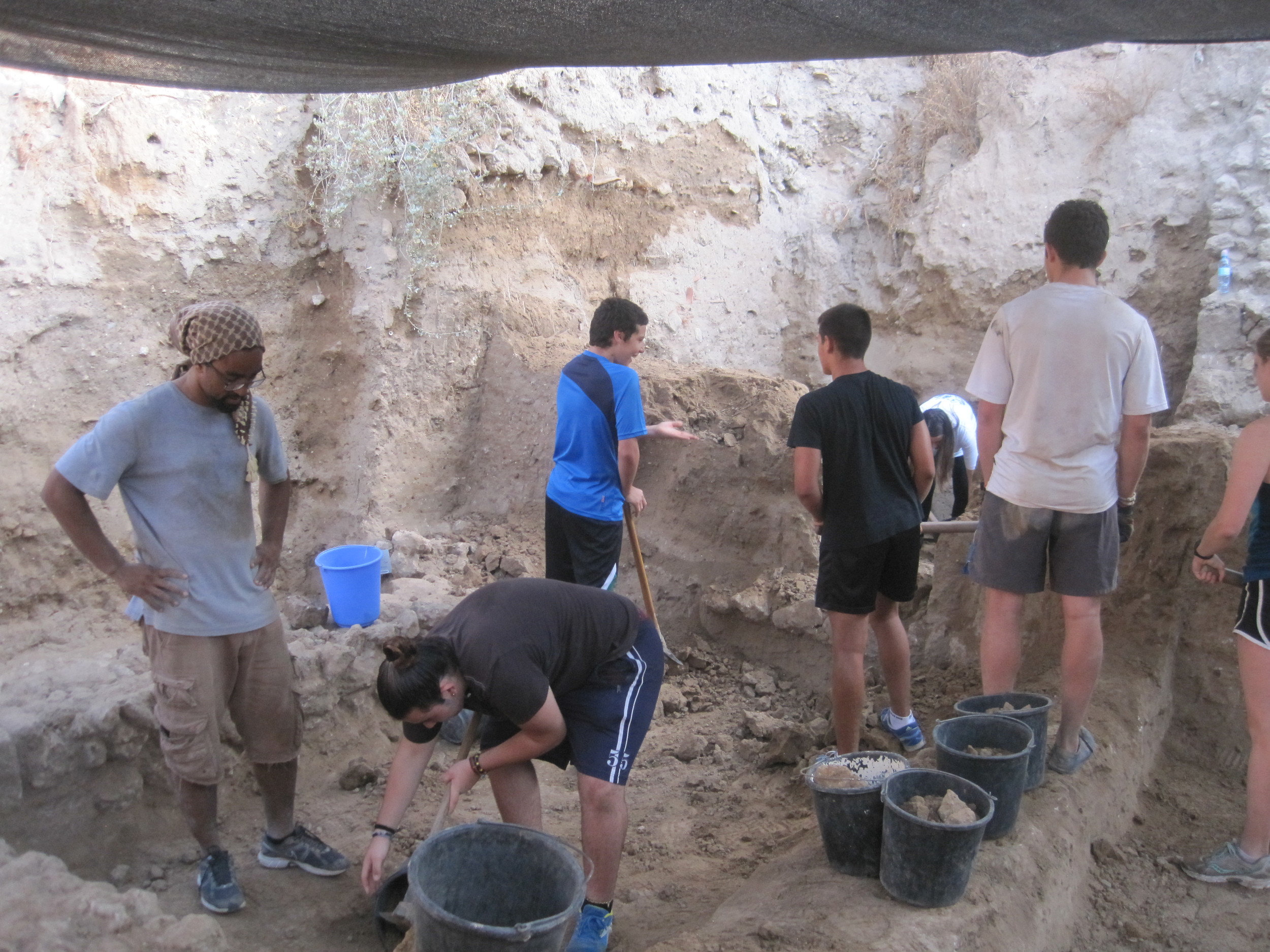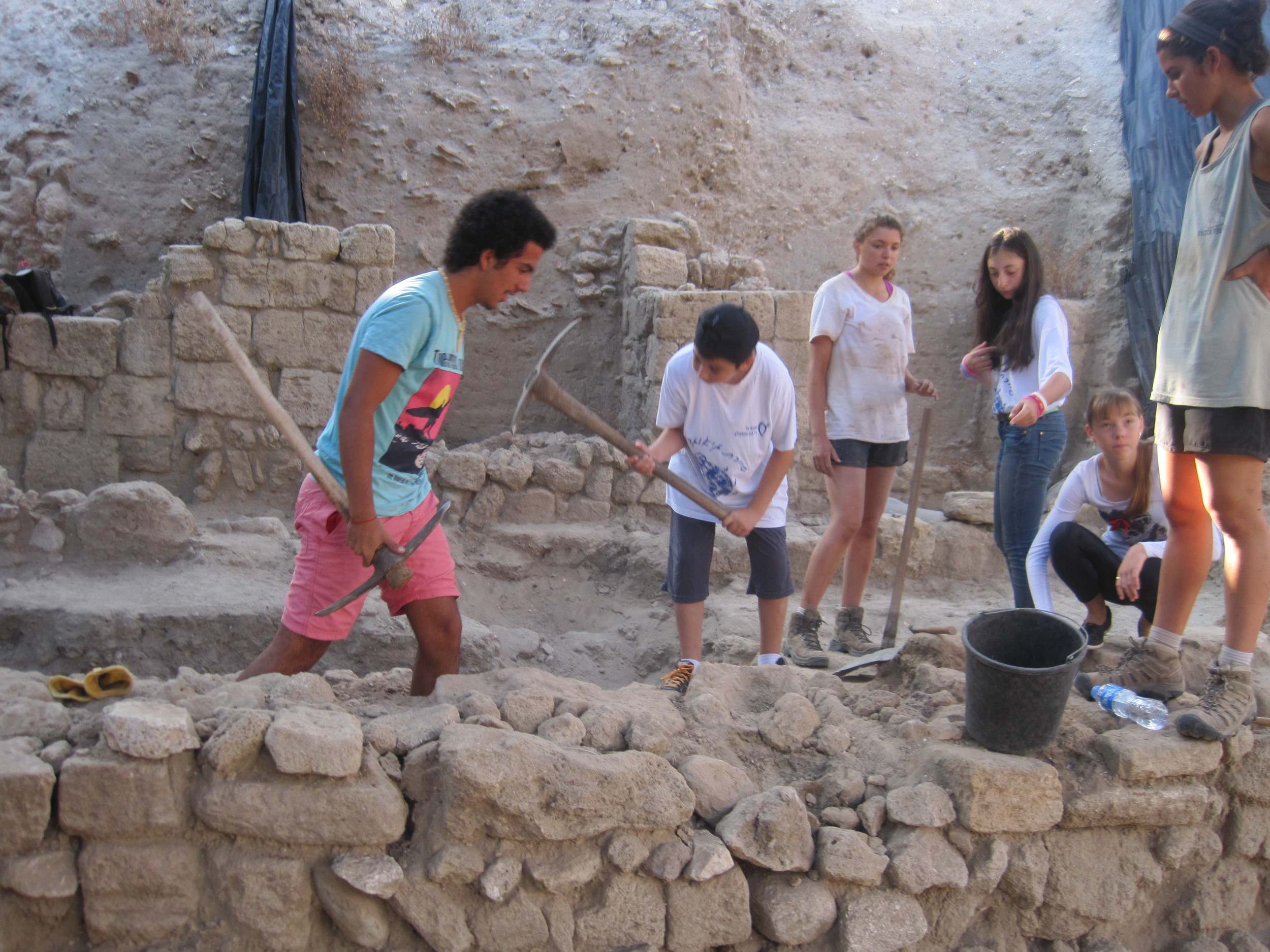Do you see Joel holding the red and white stick? That is the location we are taking a measurement of.
For every area, we take a reading when we go down a level in time. This means that even though it is the same space, we could take multiple coordinates so we know how high each level is when a new time period starts. These levels can then be matched up with buckets of pottery we collect or with specific artifacts we find.
Taking the GIS coordinates for the location and elevation helps us see patterns when we find artifacts, even if we are not digging in the same level across our grid. This can help us determine what that space was used for and what it used to look like.
I will be posting a module soon on triangulation and GIS coordinates, so make sure to check back on our modules page if you want to learn more.
Junior Archaeologist Assignment:
Look at different objects around your house that have different heights. What would you use to measure them? A ruler? A yardstick? Use your log book to record how tall at least 5 objects are and what tool you used to measure them.
Question of the Day:
Why do you think that archaeologists don't just measure how high things are in the field? What could be the problem with just measuring how high a wall is or how deep down a well goes?




























